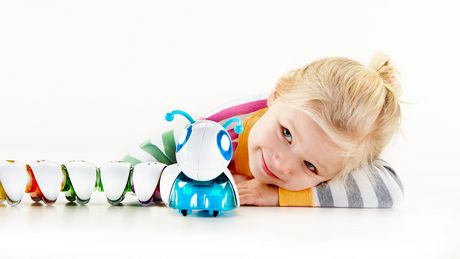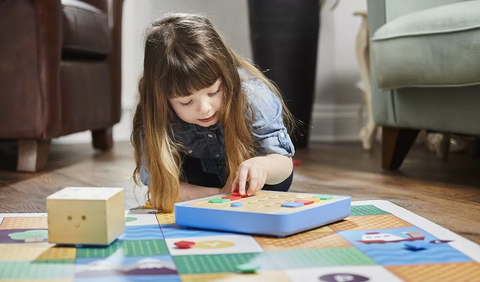
Smarter toys = smarter kids
This post is totally unrelated to what we sell at sanbetongnhexmc, but I’m actually a big tech nerd so just had to share. I grew up playing Logo on a 268mb computer, but the current generation has much more to choose from. In the ever more digital world, toys are not being left behind to meet the demand of our digital developments of our mini-me’s. I’m not talking the vTech toys, but proper educational STEM toys that teach the principles of coding in a playful and engaging way. Here are some cool coding toys for kids that actually do not require a screen (hooray!).
Code-a-Pillar

Fisher-Price has jumped into the smart toys with this (rather noisy) Code-a-Pillar. It has a set of eight segments and a head, and each segment has a symbol on the back that shows a direction or an "action" icon for playing music or wiggling. By linking together the body segments in a sequence, the Code-a-Pillar will follow that set of instructions to move around. Lots of fun!
Cubetto

UK based Primo Toys funded this coding robot via kickstarter. It is Designed for 3 year old, and comes with a wooden robot that is controlled from a board into which children insert puzzle piece representations of programming commands. These coding blocks are color-coded for what they do, and kids can experiment with putting them in different sequences. There are a variety of play mats and story books available where you’d take Cubetto to the moon, the arctic or the forest. Many play hours ensured but will need some initial help if you start them early on this (3+).
Code & Go Robot Mouse Activity Set

Kids can build mazes for Colby the mouse and program the mouse to take the sequential steps to get through the maze in this kit by Learning Resources. The set comes with maze cards suggestions or kids can make their own with walls and tunnels. The programming involves simple directions or an "action" like lighting up or making sounds. To aid in setting up the programming sequence, the game comes with cards that have printed icons color-coded to match the buttons on the top (which program the mouse). Designed for children as young as 5, it doesn't even require reading skills.

Leave a comment